
What are the distinguishing differences between two instruments, and how do we describe them? We know that a cello and a guitar have different sounds, despite the fact that they both have similar shapes and construction. One synthesizer can produce many different sounds, so how do we differentiate them? These differences can be explained by timbre and tone. We’ll explore those differences and how you can identify them and use them when making music.
Jump to these sections:
What is timbre in music?
Timbre is the tonal profile of a sound created by any given musical instrument. One instrument can play the same note multiple distinct ways by producing different timbres. More pronounced differences in timbre can be identified between varying instruments. Timbre is what helps you identify a piano from a trumpet, and a guitar from a synthesizer. Even within similar instrument groupings, we can tell that a saxophone has a rich, warm, and slightly breathy timbre that is distinct from the bright and clear sound of a trumpet.
Let’s look and listen to different examples of timbre in music. You can follow along in Native Instruments KOMPLETE KONTROL software included in KOMPLETE START for free.
The basics of tone
When we refer to a note in music, that note is normally identifying the fundamental frequency or pitch. This is the rate or frequency of a vibration, either by an instrument moving air, or by a synthesizer moving electricity to a speaker.
If a guitar plays a middle A note it will vibrate at 440 cycles per second, or 440 Hertz (Hz). But that would not be the only frequency we hear.
Many other factors will shape that sound, including the type of string, the wood of the instrument, whether it is amplified, which circuits the amplifier uses—even the humidity of the air will affect the frequencies we hear. All of these factors add to what are known as overtones—these are expanding multiples of a fundamental frequency.
Here is a sine wave created in MASSIVE X, it is playing A3, or “middle A.” This is purely a mathematical vibration at 440 Hz, with no timbre, because there are no overtones.

This is illustrative of the absence of any timbre, because it is purely a fundamental frequency. But there is an important thing to note—sine waves do not exist anywhere in nature. Our ears generally don’t enjoy sine waves because they don’t resemble anything—and frankly, music made up of sine waves would be very VERY dull. That’s because we enjoy hearing things that harmonize with each other, or with themselves.
Harmonics and harmony
Let’s take a look at harmonics with a guitar. Here is a guitar playing the same note, middle A, tuned to 440 Hz. This is from the SESSION GUITARIST ELECTRIC SUNBURST library. Remember—this is one single note from the guitar, the same note as our sine wave example above.
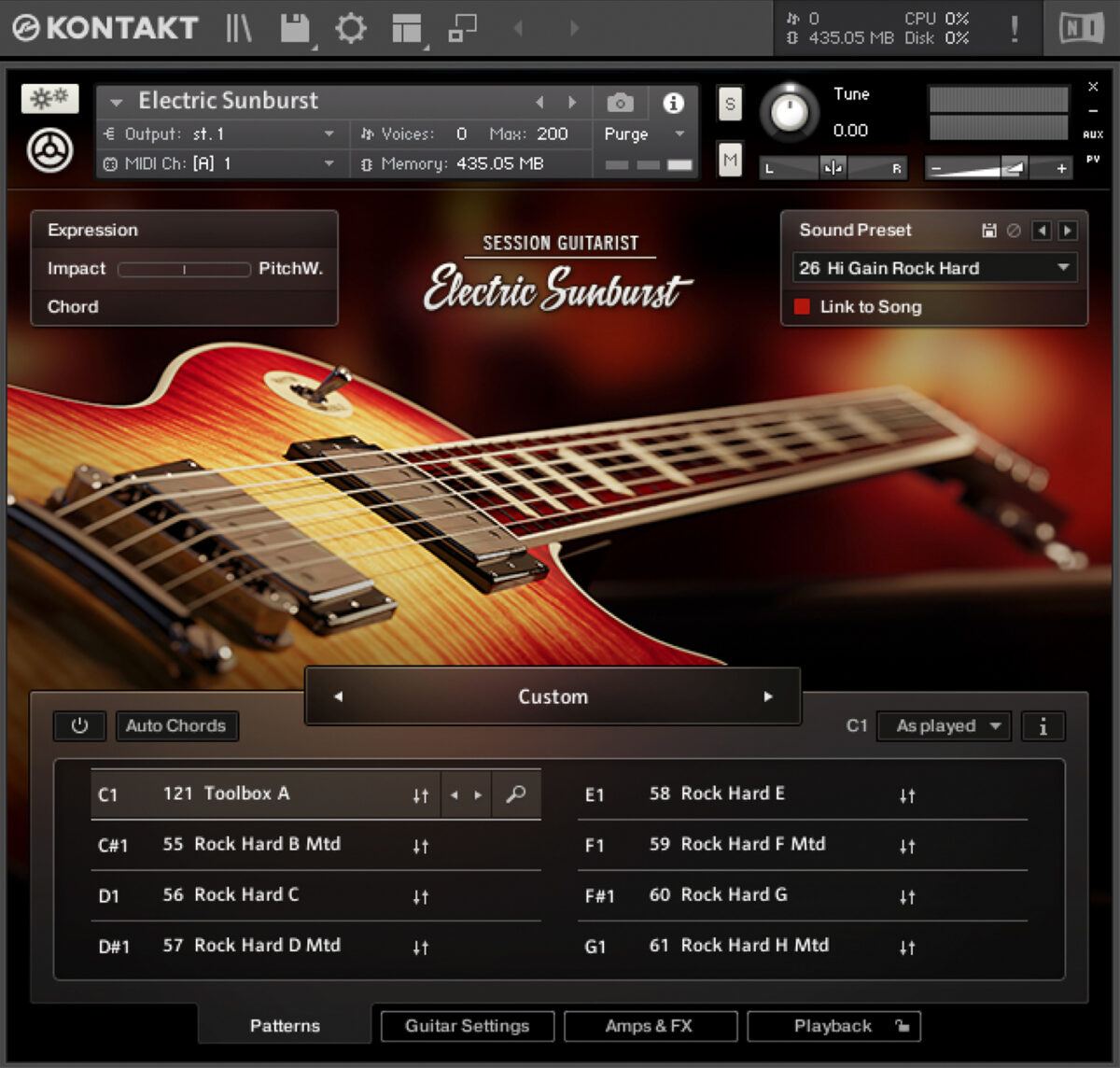
WOW! That is a BIG difference! Not only can you hear the difference, but you probably also got a bit more of an emotional reaction to that sound. It sounds like something we recognize, it has a musical quality. And we can see the difference when we look at the spectrum of frequencies it’s creating. There are plenty of overtones, and even a few undertones, tones below the fundamental.
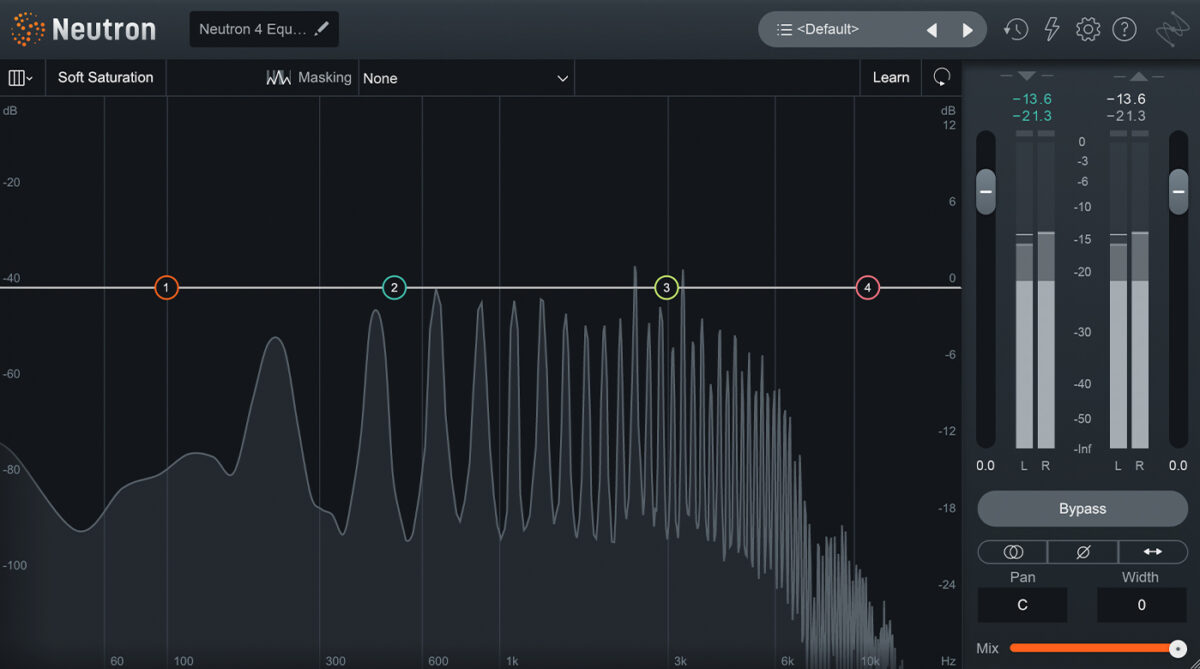
We can see that there are a lot more vibrations happening here. These are known as overtones because they are tones stacked on top of the fundamental frequency. Sometimes these are referred to as “multiples” because they occur at regular points that are multiples of the fundamental frequency.
Another term we use for these multiples is “harmonics.” A great way to think of it is that they “harmonize” with the fundamental frequency. They appear at 880 Hz, which is not only twice the pitch of our 440 Hz fundamental, it is also an A note that is one octave up. In addition to octave overtones (other A notes) we also find C# notes, and E notes. These notes also happen to be the major 3rd and perfect 5th of an A chord, meaning that with this one note, we are striking tones that sound like a full chord. This is one of the major reasons timbre is so important—one note can unlock many other pitches and sounds.
Amplitude envelopes
Another aspect of timbre is the way a sound appears over time. Some sounds start sharp, and disappear. The start is known as the “attack” of a sound, and the way it disappears is the “decay.” This is what happens in the amplitude envelope, which describes how the volume of a sound wave changes over time.
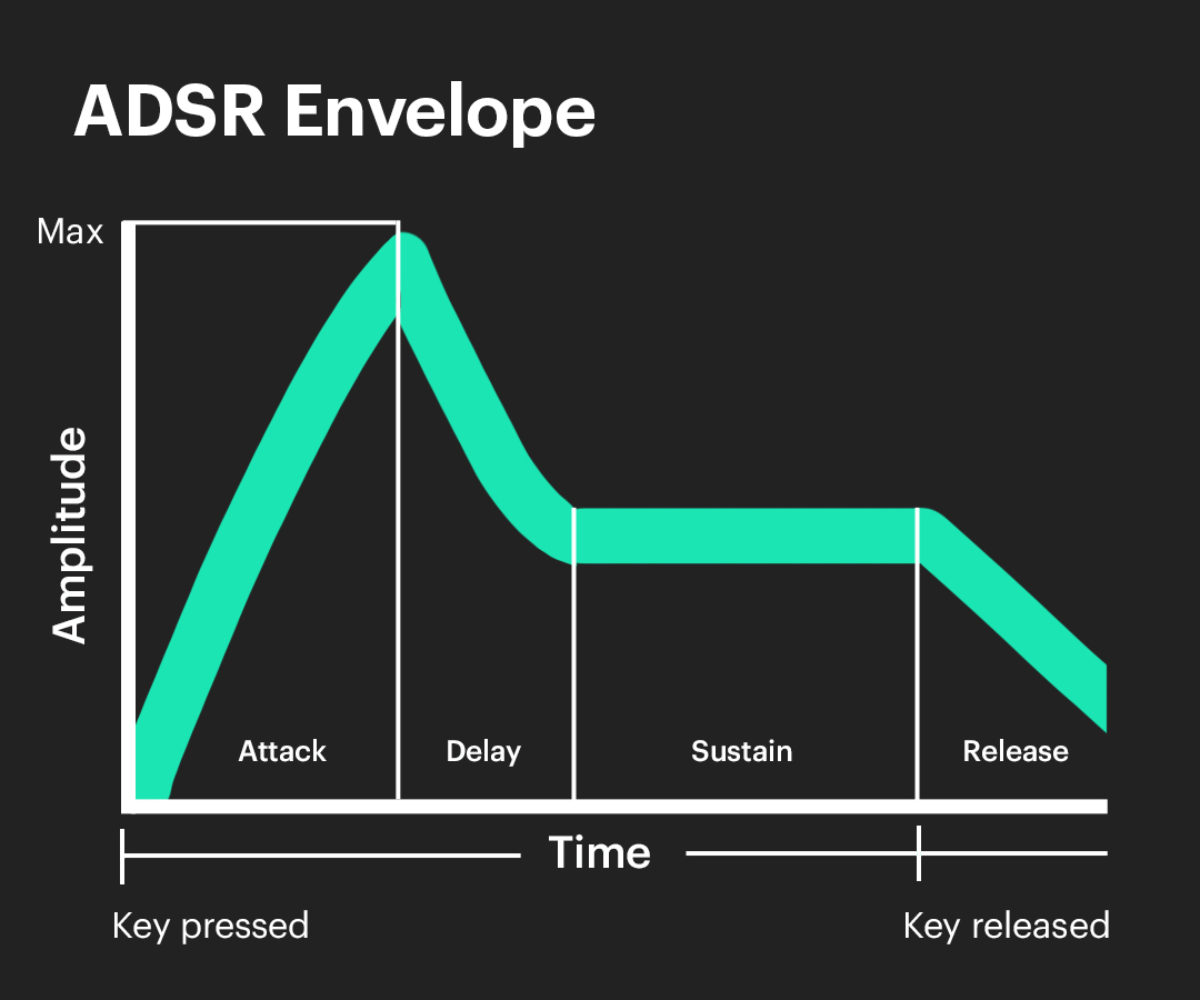
Our guitar example is helpful here. Listen to how the sound kicks in with a pluck, and rings out. Now compare that to our sine wave.
Think of a mailing envelope and how quickly it opens and closes. This envelope defines how we can hear one note sharp and fast, or another note soft and slow. These aspects factor into timbre—the nature of a note made by an instrument.
Waves and shapes
Let’s use another example. We’ll take another synthesizer, this one from KOMPLETE START, our free library of synths and sounds to get you started. This is the TRK 01 Bass synth, and it’s a great way to understand how synthesis is all based on timbres and harmonics.
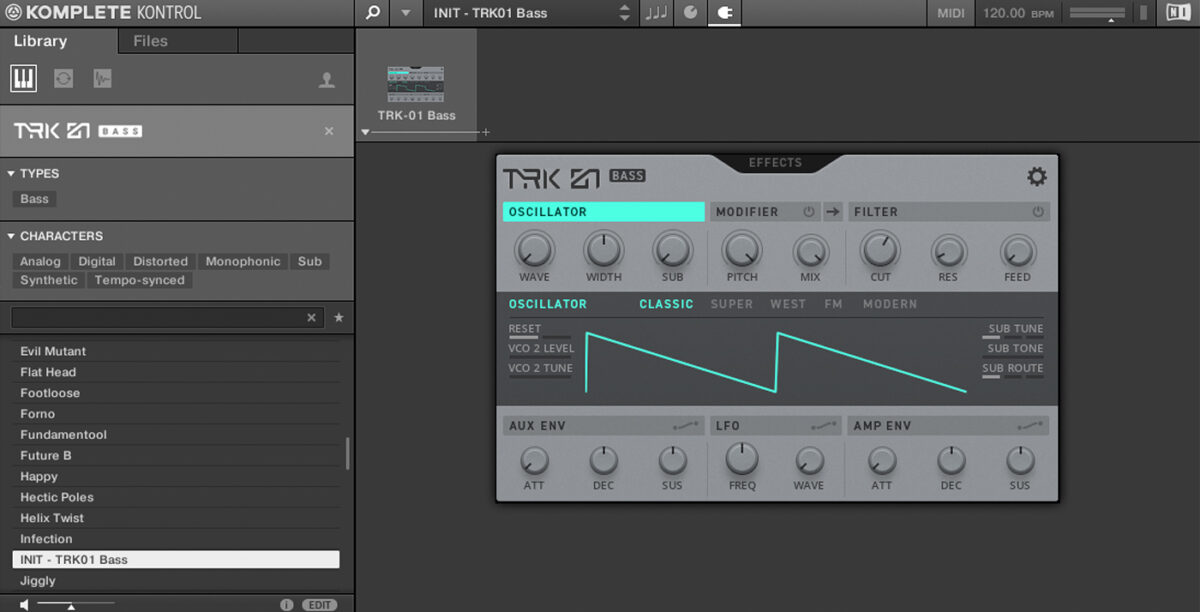
We’ll play the same note, middle A at 440 Hz. First let’s start with just a pure Sawtooth waveform. We can hear a clear difference from the other examples. If we look at the spectrum, we can see how this waveform creates a lot of harmonics, just by being a different shape from the sine wave we used in our first example.

If we shift the wave form of this synth to another shape, we’ll see another difference. This is a square wave, also playing at the same pitch, middle A 440 Hz.
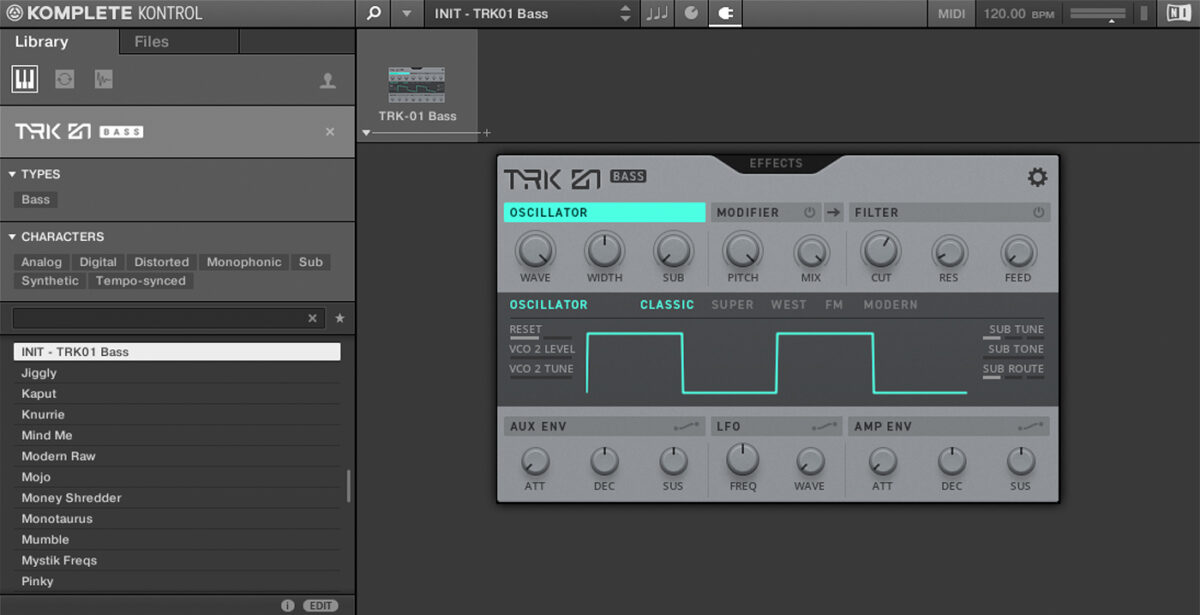
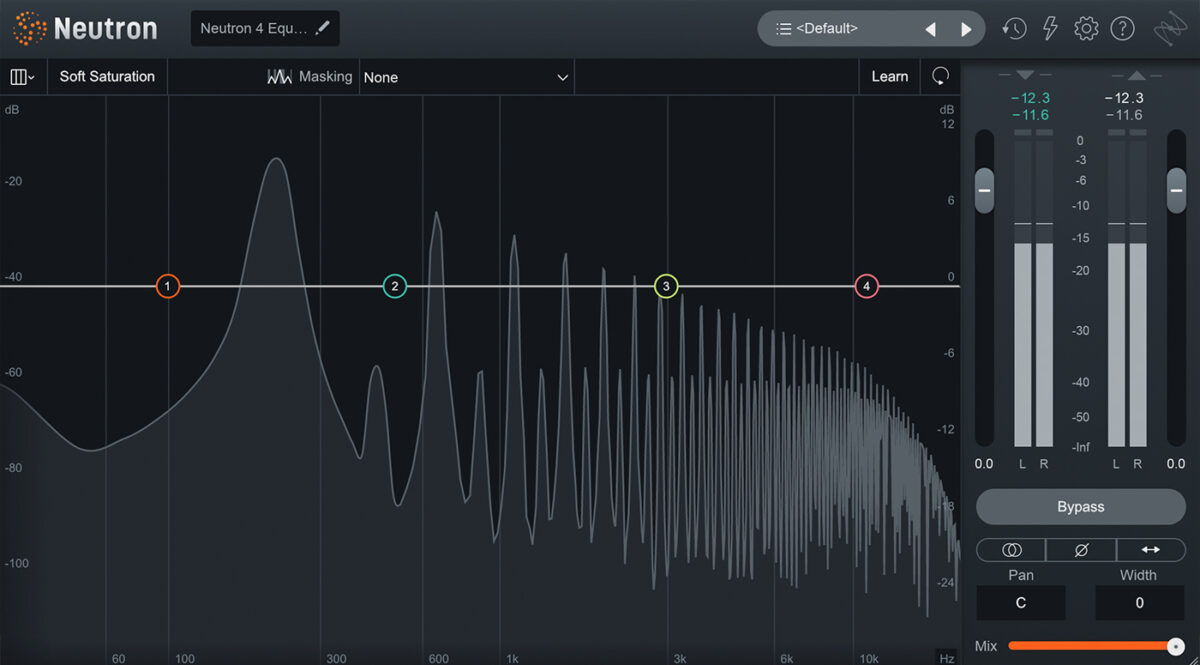
With the shift of this waveform shape, we see a different set of harmonic multiples, and we can hear the difference. These two wave shapes have a different timbre, solely from the shape of the oscillator.
But synthesis has a lot of other options for shaping timbre and tone. Synthesizers also exploit the same “amplitude envelope” that we spoke about before. We can use this envelope to “open” and “close” a note or the filter that shapes how many overtones we hear. Let’s listen to how the amplitude envelope controls the filter to change the timbre of the square wave.
On the left of our synth window, we’ll see the filter section and the amplitude envelope. We can use them together, and have the envelope control the filter’s behavior.
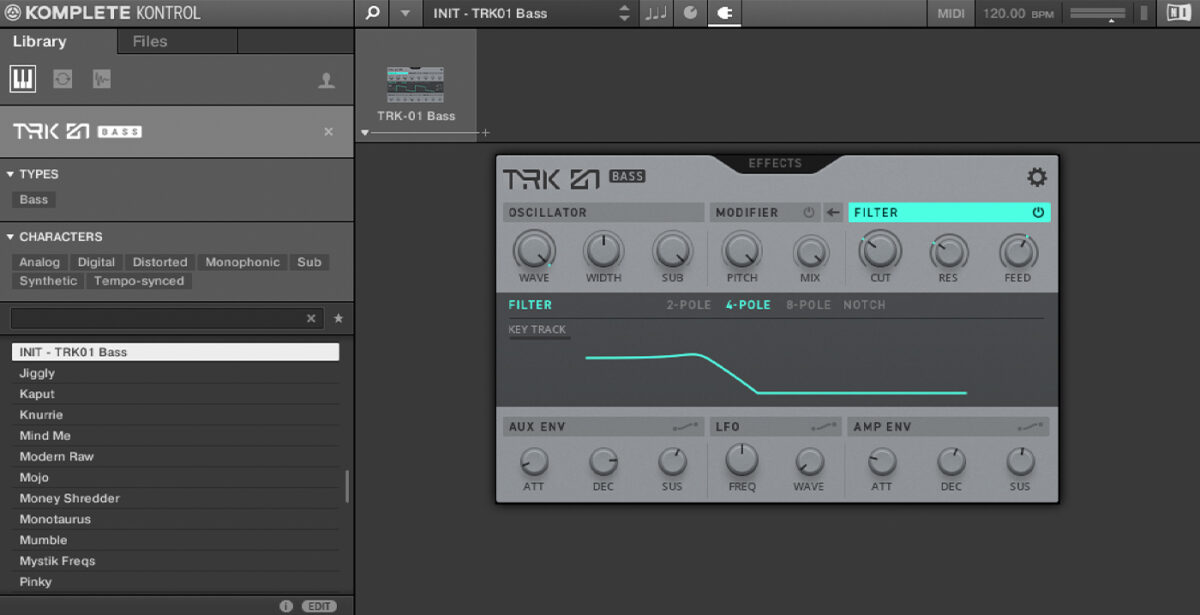
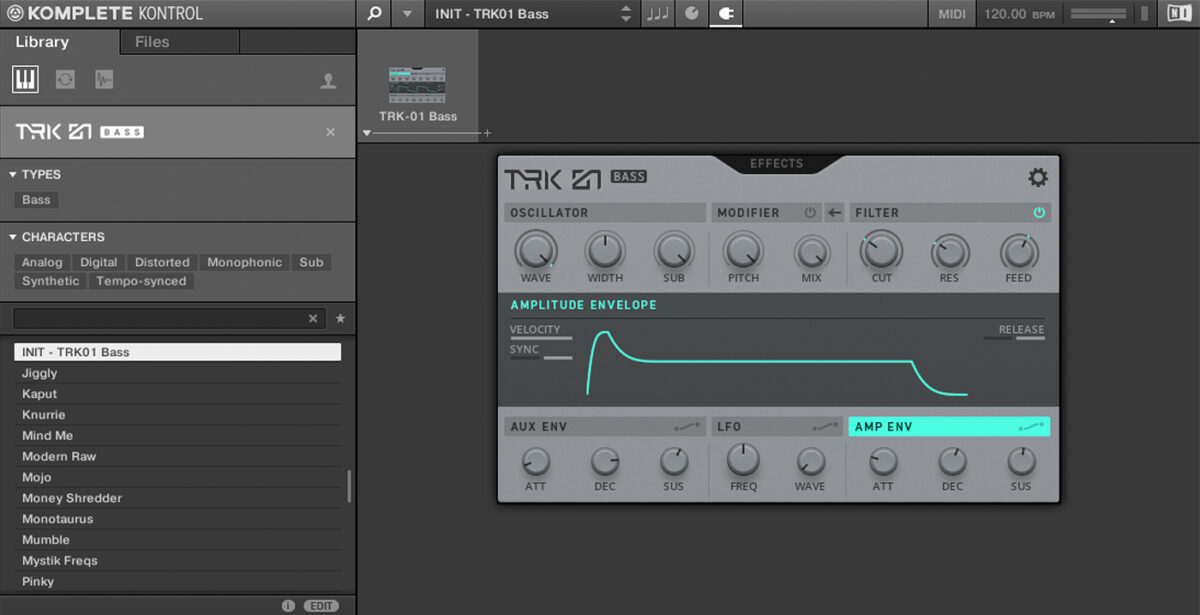
When they’re set up like this, we’ll hear how the speed at which the note begins and ends, and the way the filter closes off some of the harmonics of the waveform. This is timbre in action.
Identify timbre in music production
All of these examples can show you how much the tone and texture of an instrument can affect the emotional and sonic impact of a single note. When we compose music, we don’t just use a single note, and often use multiple instruments with different timbres. And when we go to produce those compositions, we are working to balance all the different timbres and envelopes of each sound to work together.
Music production involves balancing sounds and instruments, often by mixing those instruments so they don’t overshadow each other. To borrow a phrase—one sounds overtones might be another sounds undertones. We can use filters and EQs to control these things. Learn how to understand and use filters, and learn even more about sound design to better experiment with timbre in your own productions.















